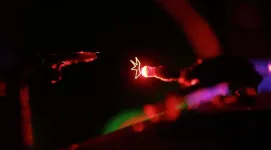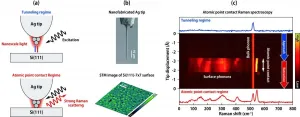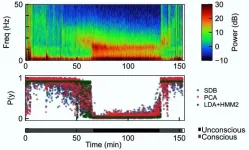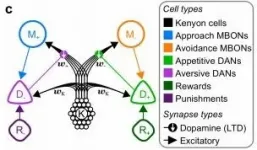(Press-News.org) Computer science researchers at the University of Central Florida have developed a sarcasm detector.
Social media has become a dominant form of communication for individuals, and for companies looking to market and sell their products and services. Properly understanding and responding to customer feedback on Twitter, Facebook and other social media platforms is critical for success, but it is incredibly labor intensive.
That's where sentiment analysis comes in. The term refers to the automated process of identifying the emotion -- either positive, negative or neutral -- associated with text. While artificial intelligence refers to logical data analysis and response, sentiment analysis is akin to correctly identifying emotional communication. A UCF team developed a technique that accurately detects sarcasm in social media text.
The team's findings were recently published in the journal Entropy.
Effectively the team taught the computer model to find patterns that often indicate sarcasm and combined that with teaching the program to correctly pick out cue words in sequences that were more likely to indicate sarcasm. They taught the model to do this by feeding it large data sets and then checked its accuracy.
"The presence of sarcasm in text is the main hindrance in the performance of sentiment analysis," says Assistant Professor of engineering Ivan Garibay '00MS '04PhD. "Sarcasm isn't always easy to identify in conversation, so you can imagine it's pretty challenging for a computer program to do it and do it well. We developed an interpretable deep learning model using multi-head self-attention and gated recurrent units. The multi-head self-attention module aids in identifying crucial sarcastic cue-words from the input, and the recurrent units learn long-range dependencies between these cue-words to better classify the input text."
The team, which includes computer science doctoral student Ramya Akula, began working on this problem under a DARPA grant that supports the organization's Computational Simulation of Online Social Behavior program.
"Sarcasm has been a major hurdle to increasing the accuracy of sentiment analysis, especially on social media, since sarcasm relies heavily on vocal tones, facial expressions and gestures that cannot be represented in text," says Brian Kettler, a program manager in DARPA's Information Innovation Office (I2O). "Recognizing sarcasm in textual online communication is no easy task as none of these cues are readily available."
This is one of the challenges Garibay's Complex Adaptive Systems Lab (CASL) is studying. CASL is an interdisciplinary research group dedicated to the study of complex phenomena such as the global economy, the global information environment, innovation ecosystems, sustainability, and social and cultural dynamics and evolution. CASL scientists study these problems using data science, network science, complexity science, cognitive science, machine learning, deep learning, social sciences, team cognition, among other approaches.
"In face-to-face conversation, sarcasm can be identified effortlessly using facial expressions, gestures, and tone of the speaker," Akula says. "Detecting sarcasm in textual communication is not a trivial task as none of these cues are readily available. Specially with the explosion of internet usage, sarcasm detection in online communications from social networking platforms is much more challenging."
INFORMATION:
Garibay is an assistant professor in Industrial Engineering and Management Systems. He has several degrees including a Ph.D. in computer science from UCF. Garibay is the director of UCF's Artificial Intelligence and Big Data Initiative of CASL and of the master's program in data analytics. His research areas include complex systems, agent-based models, information and misinformation dynamics on social media, artificial intelligence and machine learning. He has more than 75 peer-reviewed papers and more than $9.5 million in funding from various national agencies.
Akula is a doctoral scholar and graduate research assistant at CASL. She has a master's degree in computer science from Technical University of Kaiserslautern in Germany and a bachelor's degree in computer science engineering from Jawaharlal Nehru Technological University, India.
Tsukuba, Japan - Scientists from the Faculty of Health and Sports Sciences at the University of Tsukuba used aerodynamics experiments to empirically test the flight properties of a new four-panel soccer ball adopted by the English Premier League this year. Based on projectile and wind-tunnel data, they computed the drag and side forces and found that the new ball was marginally more stable than previous versions but may not fly as far. This work may help improve the design of future sports equipment.
Sports players know that millions of dollars in salary and potential endorsement deals can be at stake during each match. Soccer players often complain about the aerodynamic ...
Researchers have traced the remaining last steps of the biological pathway that gives oats resistance to the deadly crop disease take-all.
The discovery creates opportunities for new ways of defending wheat and other cereals against the soil-borne root disease.
The research team have already taken the first step in this aim by successfully reconstituting the self-defence system in the model plant Nicotiana benthamiana.
Further experiments to establish the avenacin biosynthetic pathway in wheat's more complex genome, to test if it will provide the same resistance ...
They may be tiny weapons, but Brigham Young University's holography research group has figured out how to create lightsabers -- green for Yoda and red for Darth Vader, naturally -- with actual luminous beams rising from them.
Inspired by the displays of science fiction, the researchers have also engineered battles between equally small versions of the Starship Enterprise and a Klingon Battle Cruiser that incorporate photon torpedoes launching and striking the enemy vessel that you can see with the naked eye.
"What you're seeing in the scenes we create is real; there is nothing computer generated about them," said lead researcher Dan Smalley, a professor of electrical engineering at BYU. "This is not like the movies, where the lightsabers ...
May 7, 2021 - Early in the COVID-19 pandemic, healthcare systems scrambled to modify patient care processes - particularly when it came to strategies aimed at reducing the risk of hospital-related complications. A look at how one hospital applied its learning health system (LHS) framework to respond to a COVID-19-related increase in hospital-acquired pressure injuries (HAPIs) is presented in the May/June Journal for Healthcare Quality (JHQ), the peer-reviewed journal of the National Association for Healthcare Quality (NAHQ). The journal is published in the Lippincott portfolio by Wolters Kluwer.
"Given the significant challenges ...
Today, deliveries via cesarean sections, or c-sections, have become quite common globally. Sometimes, c-sections are a medical necessity when normal deliveries become risky either for the mother or the baby. At other times, it can be a choice. C-sections today have become a considerably safer procedure than it was a few decades ago, but there is need to refine it further.
In a END ...
Children ages two to five who have the most common form of cystic fibrosis (CF), caused by two copies of the F508 gene mutation, have not had any modulator treatments available to them until recently. A new study authored by researchers at Children's Hospital Colorado and published May 6, 2021, in Lancet Respiratory Medicine shows that the CFTR modulator - lumacaftor/ivacaftor - can be safe and well-tolerated for this age range for up to 120 weeks, allowing younger children to begin proactive treatment of CF earlier in their lives.
CF affects more than 70,000 people worldwide and is a chronic, progressive, life-shortening genetic disease caused by an absent or defective protein called the CF transmembrane conductance regulator (CFTR) protein, resulting from mutations in both copies ...
Despite their extremely small size, submicron atmospheric aerosols are critical pollutants with climate change, air quality, and human health implications. Of these particles, secondary organic aerosols (SOA) form when volatile organic compounds (VOCs) oxidize to lower volatility products that bond with and increase aerosol particle size, or in some cases, they may simply exist by themselves. SOA constitutes a significant fraction of the global aerosol mass. Scientists are attempting to improve future aerosol modeling, but several discrepancies still exist between model-simulated and field-observed SOA budgets.
''Large uncertainties in model assessments of SOA budgets and correspondingly, its climate effects, ...
Nanofabrication of electronic devices has reached a single nanometer scale (10-9 m). The rapid advancement of nanoscience and nanotechnology now requires atomic-scale optical spectroscopy in order to characterize atomistic structures that will affect the properties and functions of the electronic devices.
The international team headed by Takashi Kumagai at Institute for Molecular Science discovered a huge enhancement of Raman scattering mediated by a formation of an atomic point contact between a plasmonic silver tip and a Si(111)-7×7 reconstructed surface. This was achieved by means of state-of-the-art low-temperature tip-enhanced ...
Anesthestic drugs act on the brain but most anesthesiologists rely on heart rate, respiratory rate, and movement to infer whether surgery patients remain unconscious to the desired degree. In a new study, a research team based at MIT and Massachusetts General Hospital shows that a straightforward artificial intelligence approach, attuned to the kind of anesthetic being used, can yield algorithms that assess unconsciousness in patients based on brain activity with high accuracy and reliability.
"One of the things that is foremost in the minds of anesthesiologists is 'Do I have somebody who is lying in front of me who may be conscious and I don't realize it?' Being ...
Even the humble fruit fly craves a dose of the happy hormone, according to a new study from the University of Sussex which shows how they may use dopamine to learn in a similar manner to humans.
Informatics experts at the University of Sussex have developed a new computational model that demonstrates a long sought after link between insect and mammalian learning, as detailed in a new paper published today in Nature Communications.
Incorporating anatomical and functional data from recent experiments, Dr James Bennett and colleagues modelled how the anatomy and physiology of the fruit fly's brain can support learning according to the reward prediction error (RPE) hypothesis.
The computational model indicates how dopamine neurons in an area of ...









